Wedding Photographer on Safari?
31/05/13 10:47 Filed in: Photographic Safari

Yes, you read right, there are wedding photographers on safari. There are not only people who go on honeymoon on photographic safari or wildlife photography course, there are also people who get married on photographic safari.
Bush lodges in South Africa, Kenya, Tanzania, Namibia and Botswana are terrific locations to celebrate your wedding. Tables are set out under the trees, decks open views onto Great Plains and animals pass by while you say yes. And of course you need somebody to capture that moment and that would be the wedding photographer.
There are local photographers available to do that, but you can also bring your own favorite wedding photographer with you. You should only make sure he/she understands the bush and its light that the images turn out as you want them.
Planning to get married?
Ute Sonnenberg for www.rohoyachui.com
Wildlife Photography Destination Sabi Sand
30/05/13 08:49 Filed in: Photographic Safari
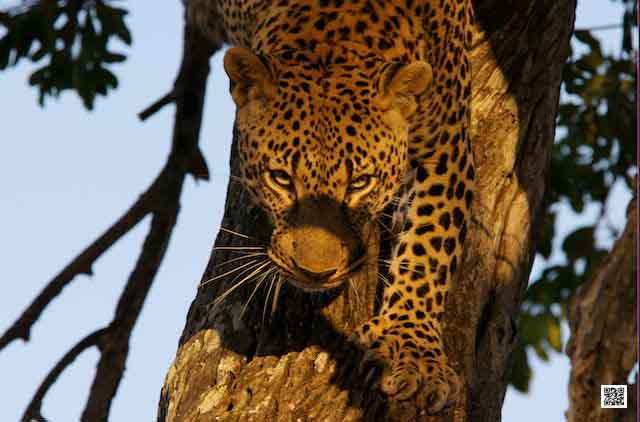
The Sabi Sand is a wildlife area bordering Kruger National Park in South Africa. It is named after it’s two rivers the Sabi and the Sand River. This area is the gem of the safari areas in South Africa, actually it is the best area to visit when going on photographic safari, team building photographic safari and wildlife photography course in South Africa. And for those who would love to see leopard it is anyway a must. It is almost guaranteed to see leopard there.
The main reason this area is so great for wildlife sightings is the fact that it consists entirely of private game reserves. No public road, no self-drive safaris and strict rules make the difference. For example at a cat sighting only three vehicles are allowed and if there are cubs involved even only two or one, depending on the age of the cubs.
Accommodation wise there is a variety of lodges available, from budget to luxury. But there is a but. When planning a safari to this area ask how many guests will be on the game vehicle. It differs per lodge and you should choose a lodge with a maximum of 6 guests on the vehicle. Anything more is very irritating and frustrating, especially when doing photography.
If you plan to go on safari in South Africa, you should definitely go there, it’s the best you can get.
Happy snapping!
Ute Sonnenberg for www.rohoyachui.com
High Res. Images for Social Media?
29/05/13 08:49 Filed in: Photo Tips

There have been two major revamps recently of social media platforms and both go the same route, bigger images. Google+ and Flickr have changed their design and especially on Google+ the images can be blown up to really big sizes. But that only looks good when the image is high res and the question is do you want to upload high res images to social media?
Lets only take guests of photographic safaris, team building photographic safaris en attendees of wildlife photography courses. They all come home with beautiful images and they all want to share them with their friends and family. If they upload their images in high res, anybody who wants to use their images can download them or screen-shot them for further unauthorized use. The quality will be excellent and will be even fine for brochures and other print media. Now you could watermark the images, but you don’t want it to be too dominating on the image. That still gives people the opportunity to download your image and crop the part they want for their purposes.
What to do? I think it’s wise to keep using low-res images. You might not be able to avoid stealing entirely, but at least you can limit the use of the images. And you don’t know anyway, if Google will choose your image to be the huge one on the stream.
Happy snapping and sharing!
Ute Sonnenberg for www.rohoyachui.com
With Point-and-Shoot Camera on Safari?
28/05/13 09:29 Filed in: Photo Tips

With all the talk about big cameras and big lenses for wildlife photography, photographic safaris, wildlife photography courses and team building photographic safaris one can easily feel intimidated and hesitating to go on safari. But don’t, you can go with your point-and-shoot camera on safari; you will just have to keep in mind that there are some limits to what you can expect from your images.
You don’t need to worry about the zoom. Most of the small cameras have a great zoom, some get even closer than the big lenses. It’s the image quality that makes the difference. But if you just want to capture your memories and don’t have high aspirations in wildlife photography you will be fine.
The biggest problem with the small cameras is the speed. They are not fast enough to capture fast changing moments and that can be frustrating. You can reduce the frustration by learning about animal behavior and anticipating on animal movement, that you get the shots you want. It will not be perfect, but you will do well.
But the most important is, that you enjoy your safari and often only watching is just great.
Have fun and just go!
Ute Sonnenberg for www.rohoyachui.com
How Flexible is the Canon 200-400mm lens?
27/05/13 08:50 Filed in: Photo Tips

Canon has just announced the new 200-400mm f/4 with built-in 1.4 extender for USD 11,799. With the extender switched on the lens goes from 280-560mm.
There are already plenty of reviews and just as many comments on the lens out there in the Internet. The lens should be perfect for wildlife photography and one of the reasons for that was the flexibility the lens gives. Lets look at that in particular.
People who have been on photographic safaris, wildlife photography courses or team building photographic safaris will know, that a good zoom is very important in wildlife photography. With the extender switched on the lens offers 560mm, witch is great and very helpful when you just need that extra zoom, but don’t want to carry a 500mm or 600mm fixed lens with you around on safari. The Canon lens gives you this flexibility without an extra lens or changing/placing the extender when you think you will need it. In wildlife photography you won’t have the time to do that. The moment will be gone. So, the instantly switched on extender is really great. Another point on safaris is the dust. When you have to change or mount the extender, you have to expose the sensor to the environment and you should try to avoid that when being on a game vehicle in the bush.
A little downside are the 200mm limit. Wildlife often comes quite close and the 200mm will be too much to photograph them. I love to use my Nikon 80-400mm, but even the 80mm can sometimes be too much. Out of my own experience I would love to get an 80-400mm with a built-in extender and a f/2.8 and still easy to handle, but this might be impossible, at least now.
Read more about the lens in a B&H review.
Happy snapping!
Ute Sonnenberg for www.rohoyachui.com
ePhoto Book: Dream Okavango
26/05/13 08:49 Filed in: Photographic safari destination

One of the dream destinations of photographic safaris, wildlife photography courses and team building photographic safaris is the Okavango Delta in Botswana.
Join a female leopard in her dream of her home, the amazingly beautiful Okavango Delta, where a river disappears in the desert and creates a magical place.
View the ephoto book here.
Happy dreaming!
Ute Sonnenberg for www.rohoyachui.com
On Photo Safari: Google Glasses on Safari?
25/05/13 09:32 Filed in: Photographic Safari

I don’t think the bush will be one of the places where Google glasses will be banned, but what can they add to your safari experience? Imagine you are on a photographic safari, wildlife photography course or team building photographic safari with your entire camera equipment and Goggle glasses. Or will you leave your camera equipment at home? Better not, because the glasses need Internet to really serve the purpose of sharing what you see. And how are you photographing with your DSLR when wearing the glasses? Will you get confused by what the glasses are constantly telling you or will they be a useful tool?
I don’t know. Maybe one day we will watch real time wildlife documentaries from people on a game drive in the Masai Mara, broadcasting real time through their YouTube channel. I don’t know how we will cope with this ever-increasing stream of date and what about the quality?
Well, lets see what the future brings, but I will definitely stick to my camera, just for the love of photography.
Happy snapping changing times!
Ute Sonnenberg for www.rohoyachui.com
Does Adobe Think of Wildlife Phhotographers?
24/05/13 09:10 Filed in: Wildlife Photography Courses

Adobe has recently announced that from CS7 its software will only be available as cloud service. This is not only a financial issue, but also and access issue.
As a wildlife photographer, photographic safari guest, wildlife photography course attendee or team building photographic safari delegate you will have a big problem with Adobe software, because you are in the bush.
Although most of the lodges and camps have Internet access nowadays, the bandwidth and speed are to poor for the purpose of using Adobe creative cloud. Imagine editing an image in the cloud with a common satellite connection and ten other people want to do that at the same time. This does not work. Even checking emails will take forever in such a situation; don’t even think of image editing.
The conclusion can only be that Adobe did not think of anybody outside areas with high technology infrastructure standard, but there are huge regions in the world (even in cities) where photographers will not be able to use the cloud service, just because of the poor Internet connection. And then? I don’t know, but I hope there will be a solution to have CS on the computer or some magical improvement of Internet, but anyhow, there needs to be one.
Happy snapping and enjoying photography!
Ute Sonnenberg for www.rohoyachui.com
Where is Your Camera Right Now.
23/05/13 08:42 Filed in: Phographic Safari Tips

Never thought about it? But what will you do when you suddenly see something fabulous or breathtakingly beautiful? Searching your bag or pockets for the cell phone and missing the great moment?
These questions might sound silly for our daily journey to work and back, but they are not. On photographic safari, wildlife photography courses and team building photographic safari guests learn that you should always be ready to shoot and often they learn it the hard way. When returning to the lodge or camp from an evening game drive it is very tempting to pack your camera in your bag, because you can see already the lights of the camp, but suddenly there is a porcupine on the road and you have no camera ready. This is the moment you will remember forever, because you were desperate to see a porcupine and now its gone and you have no photo.
This is just the same with our travel to work every day or other situations we experience as ordinary and not worth to have a camera at hand. But what about the sunrise that suddenly paints the city purple or the great light in the park?
So, where is your camera? You got the point and just remember, a great photographic moment can appear anywhere, any time.
Happy snapping!
Ute Sonnenberg for www.rohoyachui.com
How to Choose Your Photographic Safari
22/05/13 09:17 Filed in: Phographic Safari Tips

The first step to choose a photographic safari, wildlife photography course or team building photographic safari is probably to go to the Internet and search on Google for the destinations we have in mind. A whole flood of possibilities evolves and now we have to choose from this overwhelming amount of offers.
Automatically we have a look at the top search results and often we just go with them. But there is a lot to be considered when choosing a photographic safari. One main factor is the budget available for the trip, but be also conscious of the quality and what determines the quality of a safari.
If you want the real safari feeling you should not book a lodge that feels like a hotel. Choose a tented camp and there are great simple camps that offer just all you need for a reasonable price. Make sure you will have the game drives in 4x4 safari vehicles and a professional trained guide as the driver. Choose A-locations to avoid disappointment with the sightings. If you are determent to see leopards, go to places where you have the highest chance to see them, not to places where they are rarely seen.
And last but not least trust your feeling. Your intuition will not let you down and help you finding the right safari from all the offers available and probably all the information you get from all sorts of resources. Somehow you will just know what to do and it will be the right choice for your safari.
Happy traveling!
Ute Sonnenberg for www.rohoyachui.com
Can You Leave Office Behind?
21/05/13 08:44 Filed in: Team Building

It is a common sight in our cities to see people walking with their heads down, scrolling through emails, social media or having a phone call and doing all together. But how is it on holiday and especially on photographic safaris or during wildlife photography courses? Well, it depends.
A few years ago, going on a photographic safari was a great excuse for not answering phone calls and not accessing emails, because there was no Internet in the bush. But the pressure of the offices made its way also into the bush. Guests could only travel to places where they have email access and cell phone signal, so the lodges nowadays are equipped with satellite Internet connections and cell phone signal. But at least on the game drives there is mostly still an oasis of Internet free space, what keeps the office out.
But in essence its us, having the feeling that we cannot be without the emails and phone calls, like something terrible would happen, if we would not respond immediately. Especially during team building photographic safaris it is hard for the delegates to switch off. They are there with their colleagues and of course conversations are going about work, but at least the photography and the wildlife distract for several hours a day and create a real break from the office, also if there is Internet. Nature and photography are stronger than emails and probably more inspiring.
Enjoy your photography office breaks.
Happy snapping!
Ute Sonnenberg for www.rohoyachui.com
Do You Feel Like Richard Avedon?
20/05/13 10:20 Filed in: Photography & Art
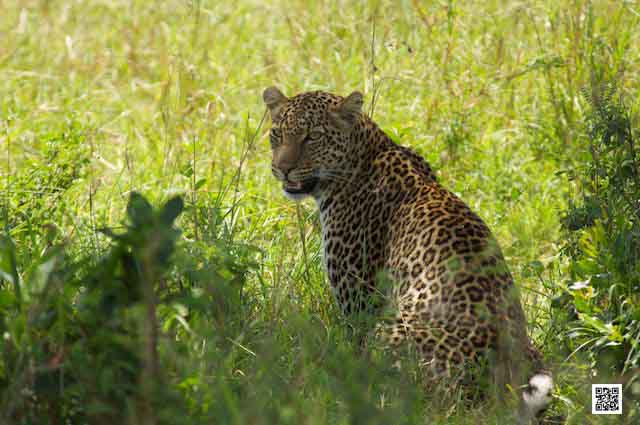
Richard Avedon, one of the greatest photographers of the 20th century and worldwide known for his provocative fashion photography and minimalistic portraits said this:
“And if a day goes by without my doing something related to photography, it’s as though I’ve neglected something essential to my existence, as though I had forgotten to wake up. I know that the accident of my being a photographer has made my life possible.”
Does that sound familiar to you or has photography not quite such a place in your life or are you just not conscious about it? Isn’t photography not what we do constantly without even noticing anymore? Often heard comments and thoughts of guests on photographic safari, team building photographic safaris or during wildlife photography courses are resolutions to do more photography when they are back home, to buy new equipment, to follow courses or even to start reading the manual. But just as often not much happens when they are back home. The daily challenges get hold of them and reading the manual of the camera is the last thing they want to do, but does photography need resolutions?
Don’t make it to heavy, sounding like work. Photography is light and fun and you learn the most by doing it. So just remember you have a cell phone, that enables you to shoot away wherever you are and photography becomes part of your daily life like weaking up in the morning.
Happy snapping!
Ute Sonnenberg for www.rohoyachui.com
ePhoto Book: Black & White
18/05/13 08:48 Filed in: Photography & Art

Wildlife Photography from the early photographic safaris where in black and white and they still breath the mystery of the times back then. But maybe its what black and white photography does anyway, it looks mystic, secretive and gentle.
View the ephoto book here.
Ute Sonnenberg for www.rohoyachui.com
On Photo Safari: Whwn You See Busses
18/05/13 08:47 Filed in: Photographic Safari

When you plan to go on a photographic safari, wildlife photography course or team building photographic safari you will most likely picture yourself on a 4x4 safari vehicle, looking out over the bush, animals passing by and silence. No sigh of civilization is in your picture, no noise on disturbance.
When you eventually get to your photographic safari destination and you are driving on a tar road and a touring bus is coming towards you, you know that there is something wrong. Your are not at the right place, this is not the safari feeling you came for.
I other words, be careful where you are going, inquire carefully about the national parks you are visiting and what you can expect to see. Only the private game reserves can provide the undisturbed safari experience, but also parks like the Masai Mara are great. Often national parks close to big cities are used for excursions for schools or big groups of tourists. Keep that in mind when you plan your trip.
Enjoy the wildlife and have fun with your photography.
Ute Sonnenberg for www.rohoyachui.com
How to Learn form Sally Mann
17/05/13 12:54 Filed in: Wildlife Photography Courses
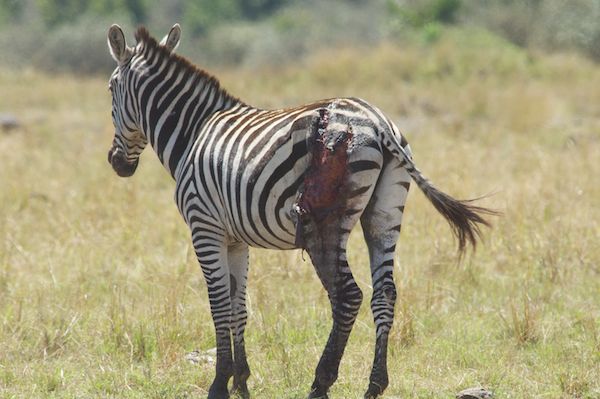
Being on photographic safaris, wildlife photography courses or team building photographic safaris means being out in the bush, in nature. That means that one sees not only the cute lion cub, but also a carcass of an animal or even a lion or leopard kill. Some will think immediately “I don’t want to see a kill or carcass” and others are keen to see the rare sighting of a kill. No matter how you feel about in advance, when suddenly witnessing it is a very special experience, not only as a person, but also as a photographer.
Photographing a kill or a carcass asks for dignity, yet showing the whole truth of the moment. Sally Mann is an American photographer who does that in an artistic and careful way as her images show. It is like the photographer becomes responsible to capture the essence of the moment and to tell its story. The animal is not gone, it lives on in the images and it will not be forgotten.
See more of Sally Mann’s work on her website.
Ute Sonnenberg for www.rohoyachui.com
How to Learn from Sid Kaplan
16/05/13 13:06 Filed in: Wildlife Photography Courses

Photographing in the Masai Mara in Kenya can be challenging with regards to the intense bright light between the golden hours in the morning and the late afternoon. Feedback from people on photographic safaris, during wildlife photography courses and team building photographic safaris often goes about frustration with washed out looking images. The colors are washed out and it looks over exposed. There are a few ways to get better results, but it is also possible to play with the natural tendency to over exposed images in this environment.
Sid Kaplan, the legendary master printer and photographer uses over exposure (and under exposure) pretty often in his images and creates great effects. He dares to play with it and to let it be dominant in the image. Yet there is always contrast and that might be the secret.
The bright day light in the Masai Mara tends to let everything look over exposed, but there is always some shade or a dark tree trunk that provide contrast. No play with the focus point and/or metering and create Sid Kaplan inspired photographs of wildlife and fabulous landscapes.
Inspired? Happy snapping!
Ute Sonnenberg for www.rohoyachui.com
Learn Perspectives from Cédric Gerbehaye
15/05/13 09:07 Filed in: Wildlife Photography Courses

An amazing thing to play with during photographic safaris in the Masai Mara, wildlife photography courses and team building photographic safaris is landscape photography by using wide-angle lenses. Ideally are clouds on a blue sky and a dirt road leading to the horizon. They are the helpers in creating perspective, giving the image depth. Yet also here, training the eye is possibly the most important thing. Photographer Cédric Gerbehaye can be a great example to learn from and to train the eye by looking at his images. He is a master in black and white photography and even portraits of people show depth and perspective.
Inspired? Start looking for perspectives in your own garden, in the park or in the street and create mesmerizing images.
Become yourself an example for others to learn from.
Happy snapping!
Ute Sonnenberg for www.rohoyachui.com
Train Your Eye
14/05/13 11:20 Filed in: Photography & Art

There is everyday somewhere news about a new piece of photographic equipment, promising better images and great photography. But in order to create great images one needs to see first and there is no equipment to replace the photographer’s eye.
It is not enough to physically see, it is necessary to see light and composition. The cameras try to help with the grid on the screen to create compositions according to the rule of thirds, but there is a better to learn that.
Just look at the old master and train your eye in seeing light and composition. During wildlife photography courses on photographic safaris and also during team building photographic safaris, training the eye is part of the photography basics. With examples of paintings the attendees learn to see perspectives and compositions, how the old masters used the light in their paintings and why we love them.
The best way to train the eye is to look at the old masters regularly, that the eye starts seeing paintings everywhere and no thinking is necessary anymore when creating a photograph.
Try it with art books or with galleries like the Louvre on the Internet and experience what it does to your photography.
Happy snapping!
Ute Sonnenberg for www.rohoyachui.com
Surprises on Team Buildings with Photography
13/05/13 10:48 Filed in: Team Building
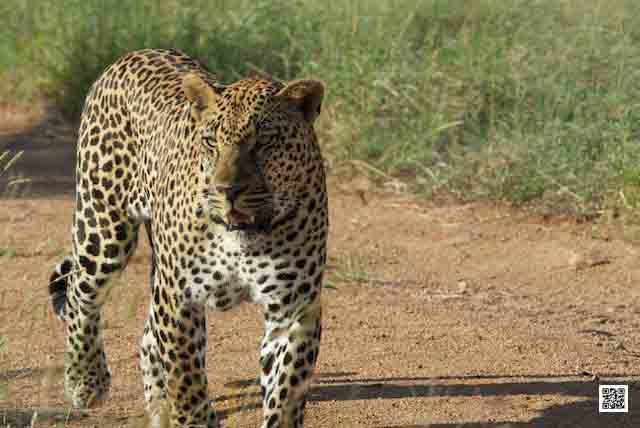
When teams do a team building photographic safari with wildlife photography course they often don’t have time to prepare in any way for it. Some buy quickly a new camera and come with the equipment stilled boxed and often the first conversations around the lunch table are still the same as in the office.
It starts during the first photography sessions that the delegates get drawn into their camera and questions evolve about settings and buttons on it. They discover the ability of their equipment and are surprised what it can do for them. The next surprises are on their way during the first photographic safari game drive when they are guided to use their cameras to capture what they see and to learn about the specifics of wildlife photography. Often the evening of the first day shows images of trying and experimenting and delegates are determined to learn more the next day. The next morning the delegates are already confident in using their camera, curious to explore more and snapping away with joy and fun. And the next big surprise is happening when they eventually see the images of the morning on the laptop and everybody is enthusiast about what the colleagues photographed, ending up making a calendar of each delegate’s favorite image to remember the experience every day in the office.
Happy snapping!
Ute Sonnenberg for www.rohoyachui.com
ePhoto Book: A Day on Photographic Safari in the Masai Mara
12/05/13 10:59 Filed in: Photographic Safari
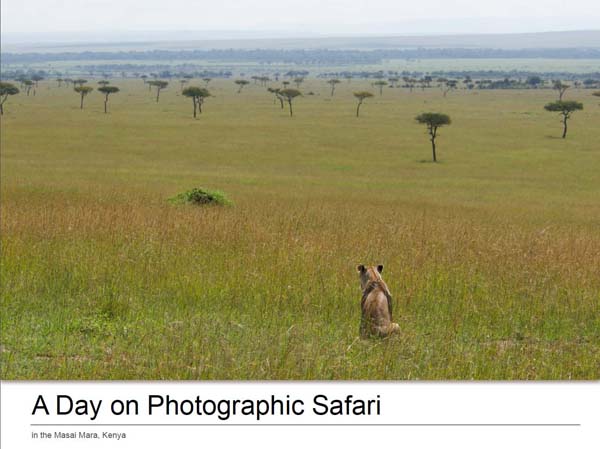
Join a reflection on a day on a photographic safari in the Masai Mara in Kenya from the early morning with the warm colors of the sunrise to the lunch picnic in the bush and the dinner in the camp.
It is just an ordinary day, yet a wonderful day.
Enjoy! View and download the ephoto book here.
Ute Sonnenberg for www.rohoyachui.com
On Photo Safari: Human Behavior
11/05/13 13:54 Filed in: Photographic Safari

Being in the bush is fabulous and doing a photographic safari or team building photographic safari is great, but there is one thing that can be very disturbing, human behavior.
We were doing a wildlife photography course in the Masai Mara and we had spotted a pride of lion moving towards a herd of impala. One lioness was leading the group, the impala constantly in her focus. It could have been a wonderful sighting, but we were not the only vehicles that had spotted them and not all behaved well. Unfortunately meanwhile about 8 vehicles had arrived, all following the lion in their attempt to hunt, with in the vehicles people hunting for photographs. Most of the vehicles kept a good distance to the lion to give them space and not to disturb, but one vehicle spoilt the whole thing. The driver of the vehicle followed the leading lioness and always drove in front of her, so that she had to look in the camera of his guest. But she was only looking in his camera when the vehicle was standing in front of her and that meant that she had to stop walking, the vehicle was standing in her path. The lioness had to stop and think what to do next to get to continue her hunt and she changed twice her direction to approach the impala and twice the vehicle drove again in front of her. When it happened for the third time she gave up, walked to a shady bush and settled there with the rest of the pride for the day. There was not chance for her to continue the hunt and the one person had spoilt it for the lion and the other photographers.
Unfortunately there is no way of getting out of the vehicle and tell the other to stop doing it, there are lion around, and that can be very frustrating, but fortunately this does not happen often.
Be conscious where you are and how the animals behave in order to let them do their thing. Otherwise you will not get the photographic opportunities and great sightings you are coming for.
Keep enjoying photographic safaris and mind the animals.
Ute Sonnenberg for www.rohoyachui.com
Photo Safari Destination Namib Desert
11/05/13 13:48 Filed in: Photographic safari destination

Namibia is a vast country in the southwest of the African continent. It is famous for its wildlife and its enormous deserts with spectacular sand dunes. The Namib Desert is located in the southwest of the country. It offers fantastic landscapes and the incredible Sossusvlei, a place of red sand dunes, changing shapes continuously and offering great photographic opportunities.
Photographic safaris and team building photographic safaris that visit the area differ from the usual safaris to other destinations in Africa. Also the focus during wildlife photography courses is more on landscapes than on animals, although even the desert offers great wildlife sightings, yet of a very different nature. The wildlife sightings are more in combination with the landscape to show the perspectives of animals in this environment.
If possible do a hot air balloon ride when you are there. It is absolutely great and a heaven for photographers. The Namib is the perfect subject for aerial photography.
But there is more. The Namib is also great for stargazing and the camps in the desert offer sleeping under the stars, an incredible experience, also for not photographers.
Inspired? It’s a fantastic place to visit and its easy accessible, also by self-drive.
Happy travelling!
Ute Sonnenberg for www.rohoyachui.com
How to Prepare for a Team Building Photographic Safari
09/05/13 06:49 Filed in: Team Building | Photographic Safari

You made the choice of a team building photographic safari and the entire team is looking forward to it in excitement of being out on a fantastic safari destination with great wildlife sightings. To make sure your experience becomes what you wish it to be, talk to the presenter of the team building about your expectations. What is the purpose of the team building? Do you want to have a fun event with wildlife photography course or are there specific things you want to achieve with the team building or is the purpose a relaxed safari to recharge and recalibrate or is it a bit of all? Reflecting about that in advance will make your team building an even greater success than just going and seeing what happens. Your assigned presenter will help you with that to make sure you get the most benefit out of the event.
Besides that, also talk about practical things like expected weather, what to wear and what to bring and your team building will be only fantastic.
Ready to go? Have fun!
Ute Sonnenberg for www.rohoyachui.com
How to Create Dreamy Soft Background
08/05/13 13:27 Filed in: Photographic Safari Tips

We probably all love these beautiful photographs with a flower or animal nicely in focus and the background blurred, with the background just being a nice color backdrop for the subject.
How can you get images like that and how do you do it when being on photographic safari? You can work with the f-stop, using a small f-stop number to have only lets say the flower in focus and the rest blurred out. But it is also possible to get the same effect by being very close to the subject when photographing it. A wide-angle lens will do very well with that.
During wildlife photography courses and team building photographic safaris we practice the being close version with subjects like flower when we are in the camp or have a picnic in the bush, but it is not working when you want to photograph animals, lets say birds. They will not let you get that close or it might be too dangerous doing that. In that case choosing a big distance results in the same effect. The telephoto lens in combination with a single focus point blurs out the background and your subject is in focus.
You don’t have to wait for a photographic safari to practice. Just look around where you live and find a flower and/or bird.
Happy snapping!
Ute Sonnenberg for www.rohoyachui.com
Planning a Photo Safari: Research Your Destination
07/05/13 08:48 Filed in: Phographic Safari Tips
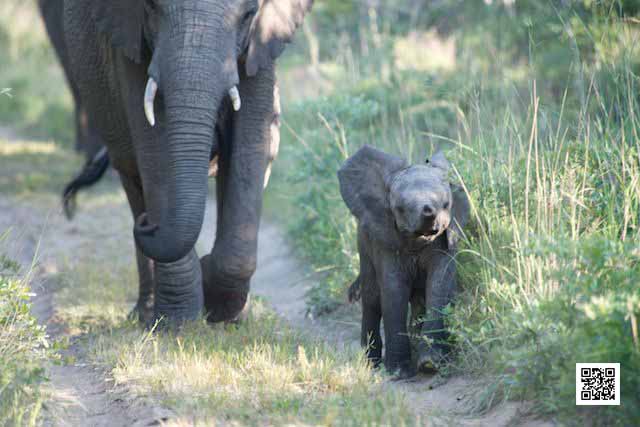
It is great to go somewhere and just shoot away spontaneously, yet there are situations you better do some preparations. That applies to travel photography and also to wildlife photography during photographic safaris. You usually have a certain amount of time to spend at several destinations and you want to photograph the best and be ready to capture great opportunities like a wildebeest crossing during the Great Migration in the Masai Mara.
Lets focus on the example photographic safaris. First of all research what is the best destination for what you want to photograph and what is the best time of the year for it. Then find out what is the best place to stay to have the game drives you are looking for with the best guides to find your animals. When this is set, prepare your gear. Research how close the animals most likely will be to make the right choice of lenses and how will the weather be at that time in this area to know what clothes to bring.
Having done all that, you should be fine, but keep in mind its nature and animals can change their mind. The same research applies to team building photographic safaris and wildlife photography course, but for the courses your photography guide will do the research for you.
And just do the same when planning a trip to New York or Paris, well without the animals, but research also these destinations that you don’t miss interesting photography opportunities.
Happy traveling!
Ute Sonnenberg for www.rohoyachui.com
Wildlife Photography: Appreciate Over Casted Days
06/05/13 12:24 Filed in: Wildlife Photography Courses

When we do wildlife photography we always wish to have the perfect light, the early morning golden light or at least sun and no clouds. But of course we don’t get it always and have to deal with all sorts of light when we are out on photographic safaris in the Masai Mara or at other amazing destination.
Especially during wildlife photography courses or team building photographic safaris people hope for sun and good weather. But actually the opposite is good for a great wildlife photography course. Changing and challenging light are great moments to learn and to produce despite the situation fabulous pictures. Over casted days offer even a better light than bright sunny days, outside the golden hours. The diffuse light of over casted days creates richer color saturation and black and white images turn out really fantastic.
Try it. When there is a day that you think this is really terrible, take your camera and photograph black and white (or turn the images later into black and white). You might really love the results.
Happy snapping!
Ute Sonnenberg for www.rohoyachui.com
ePhoto Book: Le Parfum
05/05/13 16:07 Filed in: Photography & Art

The sweet smell of flowers means summer, warmth or a special moment with a special present. This photo book wants to capture this spirit, the perfume of summer, the spectacle of colors.
Enjoy Le Parfum. Click here to view and download.
Ute Sonnenberg for www.rohoyachui.com
On Photo Safari: The Third Lion
04/05/13 16:27 Filed in: Photo Safari | Safari Story

Its such a thing with lion, when you see one, always wonder where are the others. That couldn’t have been more true than during a wildlife photography course we did a while ago in the Masai Mara in Kenya.
The wildlife photography course was part of a team building photographic safari and we had two open 4x4 jeeps to have enough space for photography. It was an afternoon game drive when we saw two mail lion lying in the grass on the open plains. It was an area where off road driving was allowed and we drove closer to the lion. All was fine. The male lion were beautiful, majestic lying in the grass with a bit of a distance between them and we drove from one to the other to see and photograph. While we were driving to the second lion we suddenly got stuck in the wet soft soil and all attempts to get out did not work. Fortunately we had two vehicles, so the other one came to pull us out, with the two male lion watching us. The drivers got out of the vehicle to connect the rope, carefully keeping an eye on the lion. The closest lion was about 60 meters away, but watching only relaxed what these creatures (us) were doing there. We all watched the two lion to make sure the guys on the ground were safe. Suddenly a third lion popped up, very close only about 20 meters away and he was annoyed. Most likely he had been sleeping and was now disturbed. He felt uncomfortable with us so close and we felt uncomfortable too, but our drivers managed to get the rope connected without problems and a moment later we were out and driving again.
The essence of this story is keep watching out when you are on photographic safari in a Big 5 area and be careful when you see a lion, there are most likely more and you don’t want to end up standing in the middle of a lion pride. Being in a vehicle is safe, but standing or walking on the ground is completely different. Then you are in their world.
Just keep that in mind when enjoying great lion sightings, don’t forget where you are.
Happy lion watching!
Ute Sonnenberg for www.rohoyachui.com
Photo Safari Destination Masai Mara
03/05/13 10:48 Filed in: Photographic safari destination
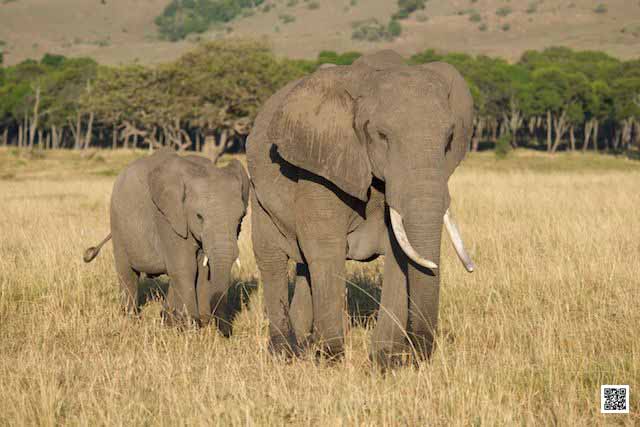
The Masai Mara in Kenya is probably the most famous photographic safari, wildlife photography course and team building photographic safari destination in Africa. The Great Migration of the big herds of zebra, wildebeest and gazelle takes place from the end of July until the beginning of September (depending on the rain) and attracts visitors from around the world. There is hardly something more spectacular than the Mara River crossing of the big herds with many crocodiles waiting for them and a strong current that makes the crossing even more dangerous. Watching this is a breathtaking experience and a heaven for wildlife photographers.
But the Masai Mara is also without Great Migration a fantastic photographic safari destination. Throughout the year the wildlife sightings are amazing and there is always an abundance of wildlife. Besides that, the landscape is also stunning, the marsh with its characteristic beauty, the mountain range offering great views and the open plains, allowing wide views like looking over an ocean, dotted with animals .
The Masai Mara offers always beauty and great wildlife sightings, spectacular light and colors. It is a magnificent place to visit.
Here a practical tip. Outside the Great Migration period the accommodation rates drop and specials are available. That doesn’t mean it is not good to go there. The Masai Mara is always great, at any time of the year.
Got the taste? Try to go.
Ute Sonnenberg for www.rohoyachui.com
How Leadership Benefits from Intuition
02/05/13 18:38 Filed in: Intuition for Business

He saw things was said about Steve Jobs and probably similar attributes are used describing other charismatic innovative business leaders. What sets them apart from others?
The conscious use and trust in their intuition. Some of them might have had it always and never thought about it, reality had proved for them that they could rely on their intuition and they had never doubts. Others might have consciously learned it and went through a process of doubts and trust of falling and standing up. But the essence of all is that they were and are conscious of the benefits of utilizing their intuition for business decisions and strategies. There is nothing more reliable, nothing that leads to results faster and there is no better communication than the communication on intuitive level, completely independent from power supply and Internet access and more precise and resourceful than anything else. Tapping into the intuitive level means access to unlimited resources, only waiting to be used for the daily challenges of business and life.
Those who have doubts and would like to have a guided start into this medium can go on an intuition training photographic safari that works like a Silicon Valley Incubator. It can be a spin off to new dimensions in success and insight. And the guide is photography, a reliable tool, available anywhere at any time.
Ready for your intuition? Its waiting for you.
Ute Sonnenberg for www.rohoyachui.com
Henri Cartier-Bresson on Wildlife Photography?
01/05/13 15:32 Filed in: Wildlife Photography Courses
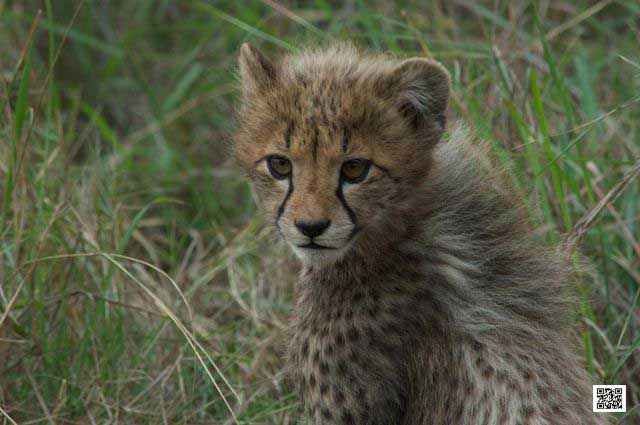
“For me photography was a mean of drawing and that’s all. Immediate sketch, done with intuition and you can’t correct it. If you have to correct it, it’s a next picture. “ (Henri Cartier-Bresson, The Decisive Moment)
Henri Cartier-Bresson is considered to be the father of modern photojournalism, yet photojournalism has a lot in common with wildlife photography. When you are on a photographic safari in the Masai Mara in Kenya with a wildlife photography course assignment photographing movement and you luckily come across a hunting lion, do you think you can ask the lion to do it again, because you are not happy with the photo? Of course not, the moment is gone, just like in photojournalism. Your next picture captures or draws a new moment and just be always ready for the moments that might come.
Wildlife photography done during team building photographic safaris shows even how an entire group of people can align during a few game drives to be in some kind of same flow of immediate sketches telling the story of a day of wildlife photography and at the same time the story of the people, the photographers.
The sketches are the photos and they show the subject and the photographer at that very moment, ready or not for the hunting lion or the man on the street making a certain gesture.
“Life is once, forever” (Henri Cartier-Bresson) also in wildlife photography.
Enjoy the moment.
Happy snapping!
Ute Sonnenberg for www.rohoyachui.com
